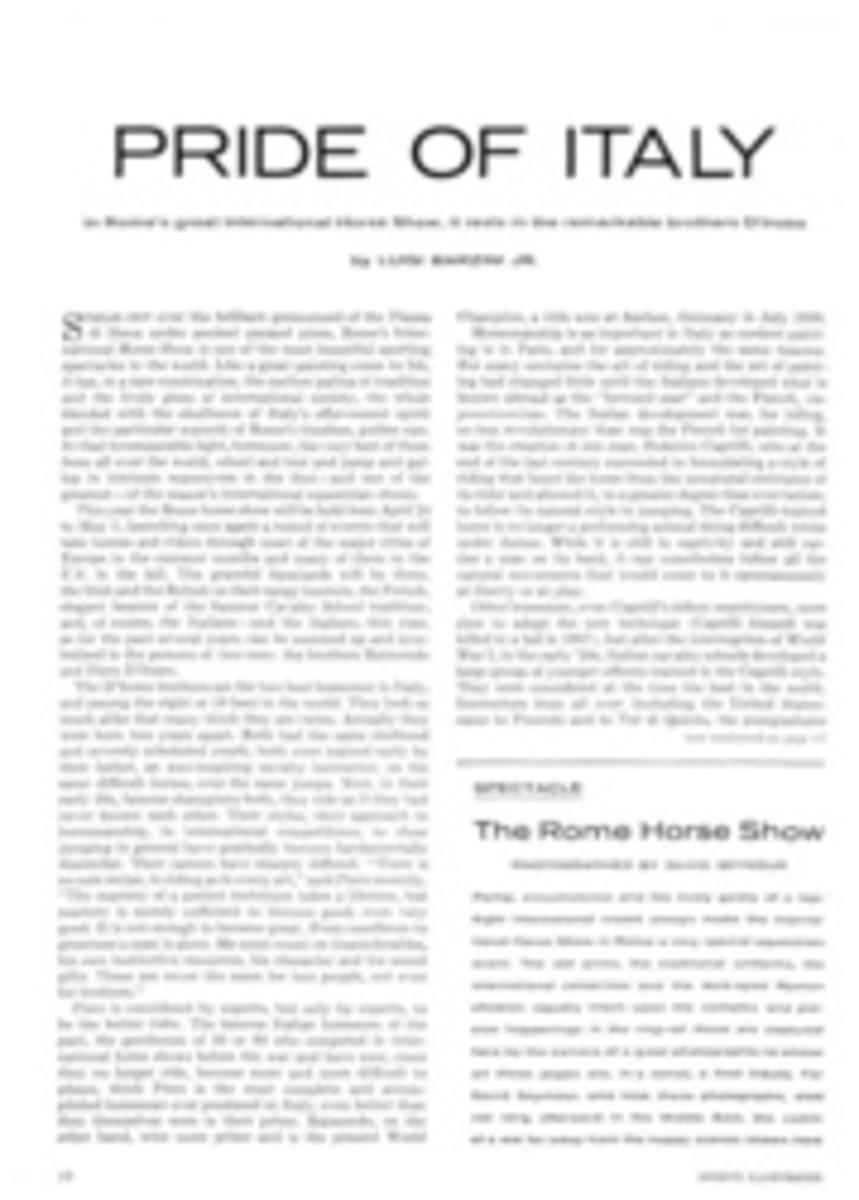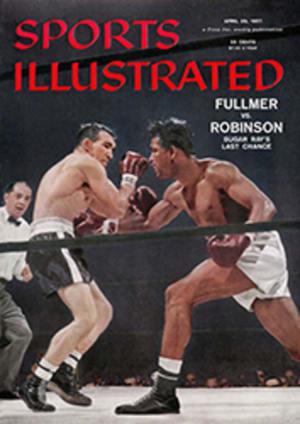
TWO ALLEY TYROS
A truly awesome spectacle in the world of sports is that of an individual, caught up by some inner fire, performing far beyond the realm of normal human capability. In sports such as bowling, in which physical prowess plays a minor role, the heroics may not be as apparent but they are none the less real. When a strike is needed to win a national championship, only the brave of heart gets it.
The 54-year-history of the American Bowling Congress Tournament, largest participation event in sports, is studded with tense moments in which one ball has meant the difference between fame and obscurity. Rarely, however, have rank amateurs displayed the raw courage shown by two of the lesser-known competitors during this year's championships at Fort Worth.
First, it was in the all-events competition—one of the four championship categories of the ABC tournament—that Jim Spalding, a 39-year-old civil engineer from Louisville, suddenly emerged as an overnight sensation. Here was a man who had started college in 1946, following World War II service, only to have his education interrupted by the Korean outbreak. Upon his return he re-entered the University of Louisville and took a night job, because by this time his wife had given birth to two daughters. Between his family and work he somehow found time to graduate with honors in 1954 and become a good bowler besides.
Spalding had participated in six ABC tournaments without distinguishing himself before making the trek to Fort Worth on April 11. His best year was 1953, when his all-events score—the total for the nine games of the championships—was 1,780, an average slightly under 198.
"I just couldn't put two good games together," he said the other day. "In a tournament like this, you've got to get a good start and then keep flying."
Spalding's start in the three-game team competition on the night of April 11 was a non-winged 186, but after that he really flew, hitting 253 and 267 for a 706 series. The following day he bowled three more games in the doubles round, firing a 720. The big board in the spacious Will Rogers Memorial Coliseum now showed that 2,007, rolled by Norman Abrams of St. Paul, was the score to beat. Spalding needed 582 in his three games of the singles division to win the all-events lead from Abrams. To do so would take a three-game average of 194, or almost the equivalent of his best previous ABC performance. He opened the singles event with 221, then came through with a second game of 236—and the championship was obviously well within his grasp.
Nonetheless, there was yet a more formidable prize—the alltime record of 2,070 set by Max Stein of Belleville, Ill. in 1937. It was the longest-standing individual mark in the book, and to shatter it Spalding needed 188 in his final game.
In bowling, the difference between getting two strikes in a row and an open frame—a miss or a split—is about 20 pins. In his last frame, Spalding stood at the threshold of bowling immortality. A strike would assure him the record. As he reached for his ball, a tense hush settled over the large crowd in the stands behind him. He was "scared stiff" as he put it later, but his features showed no sign of strain. He eased his lithe body toward the foul line, rolled, and all 10 pins went down. A new record of 2,088 went into the books.
On that same morning, Bob Allen, a 28-year-old construction company executive of Yonkers, N.Y., came through with a singles performance that was, in some respects, more spectacular than Spalding's all-events performance. Allen, a big (6 feet 5 inches) left-hander, had been going through the motions of completing his sixth mediocre ABC. His team score was 543 and his doubles 590. He opened the singles with 235, then fell to 196, and even his parents, Mr. and Mrs. George Allen, who accompanied him to Texas, must have given up hope. But Bob Allen did not give up. In his final game he bowled strike after strike—six in a row, then seven, eight, nine.
As Allen rose for the 10th frame, he scrutinized the scoreboard in the corner of the coliseum for what seemed like five minutes. Then the lines around his chin tightened. He knew what he needed—at least a 296 game—for Ed Kawolics of Chicago was in first place in the singles with a three-game total of 726. This meant that Allen must have two more strikes to win. Three would make him the 15th man in ABC history to roll a perfect 300 game. He, unlike Jim Spalding, does not have the unreadable poker face of so many top athletes. Written all over it was determination.
To cheering that rocked the great stone building, Allen bowled his 10th strike, then the 11th. He now needed the biggest strike of all. And, bowling too cautiously to ensure hitting the headpin, he did not get it. His ball hit high on the pin, leaving two. But his score of 298 rocketed him into the ABC singles lead with 729.
Generally speaking, the ABC—which winds up its seven-week stand on April 28—has been a success. Nearly 16,000 bowlers participated—only about half the number normally drawn to towns within a 200-mile radius of Chicago, but a fine turnout for the sparsely populated Southwest. American Machine & Foundry Co. automatics, which replaced pinboys for the first time, have worked smoothly and efficiently, and, Texas being Texas, the atmosphere has perhaps been more festive than usual. Fort Worth will be remembered chiefly, however, for the stars who were born there—a couple of men named Spalding and Allen who, it is safe to bet, will remind the bowling world of their presence in the tournaments ahead.
PHOTO
PARENTAL APPROVAL is given to Bob Allen following his near-perfect score of 298.

